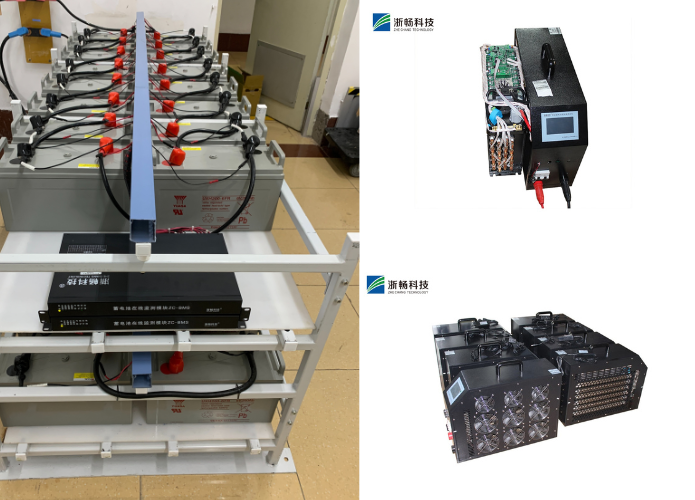Hybrid Battery Load Tester Explained: Features, Applications, and Benefits
Hybrid vehicles are rapidly becoming the future of the automotive industry, offering a greener, more fuel-efficient alternative to traditional gasoline-powered vehicles. A crucial element of hybrid vehicles is the hybrid battery, which stores energy for the vehicle's electric motor and assists the engine during acceleration. Over time, hybrid batteries can lose capacity, affecting the vehicle's overall performance and efficiency. To maintain the health of these batteries, it is essential to conduct regular diagnostics, and one of the most important tools for this task is the hybrid battery load tester.
In this detailed guide, we will explore what a hybrid battery load tester is, its features, how it works, its applications, and the many benefits it offers for hybrid vehicle owners, technicians, and fleet managers.
What is a Hybrid Battery Load Tester?
A hybrid battery load tester is a diagnostic tool specifically designed to evaluate the health and performance of hybrid vehicle batteries. Unlike simple voltage testers, this device simulates a load on the battery to measure how it performs under actual usage conditions. This is essential because hybrid batteries experience fluctuating power demands during operation, such as when accelerating or driving up hills.
The tester works by applying a controlled load to the battery, drawing current and voltage from the battery while measuring how the battery responds to this stress. The tester then analyzes the battery’s voltage drop, internal resistance, and overall performance under load. The results help determine whether the battery is in good condition, struggling to hold a charge, or needs replacement.
Hybrid battery load testers can be used to assess both the 12V auxiliary battery (often responsible for starting the vehicle and running electrical components) and the high-voltage battery that powers the electric motor.
Key Features of a Hybrid Battery Load Tester
When selecting a hybrid battery load tester, several features must be considered to ensure the device provides accurate, reliable results. These features enable technicians to perform comprehensive battery diagnostics efficiently.
1. Load Simulation
The primary feature of a hybrid battery load tester is its ability to simulate a load on the battery. This feature is critical because it mimics the real-world energy demands that the battery experiences during driving. The tester draws current from the battery and places a resistance load on it, just like the battery would experience under normal driving conditions. By doing this, the tester can evaluate how the battery performs when subjected to stress, providing an accurate representation of its overall health.
2. Voltage and Current Measurement
Accurate voltage and current measurements are essential for understanding a hybrid battery’s condition. A high-quality hybrid battery load tester will measure both of these metrics simultaneously, giving a complete picture of the battery’s output. Voltage is crucial for assessing the battery's charge level, while current measurements help determine the battery’s capacity to deliver power. A sudden drop in voltage or irregular current flow during the load test could indicate problems with the battery.
3. Battery Health Indicator
Many modern hybrid battery load testers come with built-in health indicators that assess the battery's performance. These indicators might be simple LED lights, or they could be more sophisticated digital displays that show the results in real time. The health indicator provides valuable insights into the battery's capacity, charge retention, and internal resistance, helping technicians quickly assess the condition of the battery. Some advanced models even provide detailed diagnostics that help pinpoint the specific issue, such as damaged cells or faulty connections.
4. Easy-to-Use Interface
An intuitive user interface is a crucial feature of any diagnostic tool. Hybrid battery load testers often feature digital screens with simple navigation menus and easy-to-understand symbols. The tester should also include straightforward controls, such as buttons or touch screens, for setting up the test. Clear instructions and readable displays make the testing process faster and more efficient, especially for technicians who may be using the tester regularly.
5. Portability
Because hybrid battery testing often occurs in the field or on-site, portability is a key feature. Many testers are designed to be compact and lightweight, making them easy to transport from one location to another. This is especially important for mobile technicians who may need to test multiple vehicles or fleet managers who need to monitor the health of several hybrid vehicles in a fleet. A portable tester reduces the need for cumbersome equipment and allows for quick, on-the-go diagnostics.
6. Safety Features
Safety is paramount when testing high-voltage batteries. Hybrid vehicles operate on high-voltage systems, and working with these batteries without proper precautions can be hazardous. A good hybrid battery load tester will come with built-in safety features, such as overvoltage protection, short-circuit prevention, and proper insulation. These safety features ensure that technicians can test hybrid batteries without risk of electric shock or damage to the vehicle’s electrical system.

How Does a Hybrid Battery Load Tester Work?
Understanding how a hybrid battery load tester works is essential for maximizing its effectiveness. Here’s a step-by-step breakdown of the process:
- Connection to the Battery: The first step in using a hybrid battery load tester is connecting it to the vehicle’s battery. For the high-voltage hybrid battery, this typically involves accessing the battery terminals, often located in the trunk or under the rear seats. For the 12V auxiliary battery, it’s usually connected directly to the vehicle’s battery terminals. It’s important to ensure that the connections are secure and that the tester is correctly set up to avoid inaccurate readings.
- Load Application: Once the tester is connected, it begins applying a load to the battery. This load is a simulated energy demand that mimics real-world driving conditions. For example, the tester might draw a specific current for a certain amount of time, stressing the battery to determine how it performs under typical driving conditions. The tester will continue to draw power while measuring key parameters, such as voltage and current.
- Monitoring Performance: During the test, the tester continuously monitors the battery’s performance. Key parameters include voltage levels, current flow, and internal resistance. These readings help technicians assess how the battery responds to the load. A drop in voltage or irregular current flow could indicate issues with the battery, such as worn-out cells, damaged wiring, or internal resistance buildup.
- Diagnostic Analysis: After completing the load test, the hybrid battery load tester provides a diagnostic analysis of the battery’s performance. This may include a battery health indicator, voltage drop readings, and internal resistance values. Some testers provide a numerical analysis or visual indicators that show the battery’s remaining capacity or the overall condition of the cells.
- Recommendations for Action: Based on the test results, the hybrid battery load tester may recommend actions to address any issues found. For instance, if the battery’s internal resistance is high or its capacity is low, the technician might recommend replacing certain cells or recharging the battery. If the battery fails the test entirely, the tester may suggest replacing the battery altogether.
Applications of a Hybrid Battery Load Tester
A hybrid battery load tester is used in various applications to ensure that hybrid vehicle batteries remain in optimal condition. Here are some of the primary uses:
1. Battery Health Assessment
One of the primary applications of a hybrid battery load tester is to assess the overall health of the hybrid vehicle’s battery. Hybrid batteries naturally degrade over time due to factors like temperature fluctuations, high charge/discharge cycles, and age. By using a load tester, technicians can monitor the battery’s condition and identify any degradation early, allowing for proactive maintenance.
2. Preventive Maintenance
Routine testing with a hybrid battery load tester is an excellent way to conduct preventive maintenance. Regular battery checks help catch problems before they escalate, reducing the likelihood of a sudden battery failure that could lead to costly repairs or replacements. Preventive maintenance also ensures that the vehicle continues to operate at peak efficiency, providing better fuel economy and performance.
3. Battery Replacement Diagnosis
If a hybrid vehicle owner suspects that the battery needs replacing, a hybrid battery load tester can help confirm this. By testing the battery’s capacity, internal resistance, and performance under load, the tester provides an accurate assessment of whether the battery is at the end of its lifespan or if it can still function effectively. This helps avoid unnecessary replacements, saving vehicle owners money.
4. Troubleshooting Charging Issues
If a hybrid vehicle experiences charging problems, such as slow charging or failure to charge at all, a hybrid battery load tester can help pinpoint the cause. It can determine whether the battery is at fault or if there’s an issue with the charging system, such as the inverter or charging port. This diagnostic capability is crucial for identifying the root cause of charging issues and addressing them effectively.
5. Fleet Management
For fleet managers with multiple hybrid vehicles, a hybrid battery load tester is a valuable tool for monitoring the health of each vehicle’s battery. Regular testing ensures that all vehicles are operating efficiently, minimizing the risk of battery failure and downtime. It also helps fleet managers prioritize battery replacements and plan for long-term maintenance, keeping the fleet in top condition.

Benefits of Using a Hybrid Battery Load Tester
The use of a hybrid battery load tester offers a variety of benefits, both for technicians and hybrid vehicle owners. Below are some of the key advantages:
1. Improved Battery Longevity
By identifying problems early, a hybrid battery load tester helps extend the life of the battery. For example, detecting high internal resistance or weak cells early allows for corrective action, such as reconditioning or replacing faulty components, which can prevent the need for a full battery replacement.
2. Enhanced Vehicle Performance
A well-maintained hybrid battery ensures that the vehicle operates at peak performance. With a load tester, technicians can ensure that the battery is performing efficiently, delivering optimal power to the electric motor and enhancing the overall driving experience. This leads to improved fuel economy, better acceleration, and a smoother ride.
3. Cost Savings
Routine testing and early detection of battery issues can save vehicle owners money in the long run. By addressing minor problems before they escalate into major failures, hybrid vehicle owners can avoid expensive repairs and replacements. Additionally, preventive maintenance can reduce the likelihood of costly downtime for fleet managers.
4. Increased Safety
A well-maintained battery is less likely to experience issues like overheating, leaks, or short circuits, all of which can pose safety risks. By regularly testing the battery’s performance, a hybrid battery load tester helps reduce these risks, ensuring that the vehicle remains safe to operate.
5. Faster Diagnostics
The hybrid battery load tester simplifies and speeds up the diagnostic process. With accurate, real-time data on the battery’s performance, technicians can quickly pinpoint problems and recommend solutions. This reduces diagnostic time and helps get the vehicle back on the road faster.
Conclusion
The hybrid battery load tester is an essential tool for maintaining the health and performance of hybrid vehicle batteries. By simulating real-world load conditions, measuring key battery metrics, and providing detailed diagnostic analysis, it ensures that hybrid batteries are operating at their best. Whether you're a technician, a fleet manager, or a hybrid vehicle owner, investing in a hybrid battery load tester can help you maximize the lifespan of your battery, improve vehicle performance, and save on costly repairs. Regular testing with this tool will ensure that your hybrid vehicle continues to deliver the efficiency, power, and performance that it was designed for.
Popular Battery Tester
Popular Battery Tester
Latest News
Latest News


Get Price of Battery Tester
Get Price of Battery Tester
Address:
Floor 3, Building 1, No.1418-60, Moganshan road, Hangzhou city, Zhejiang Province, China.310015

















































